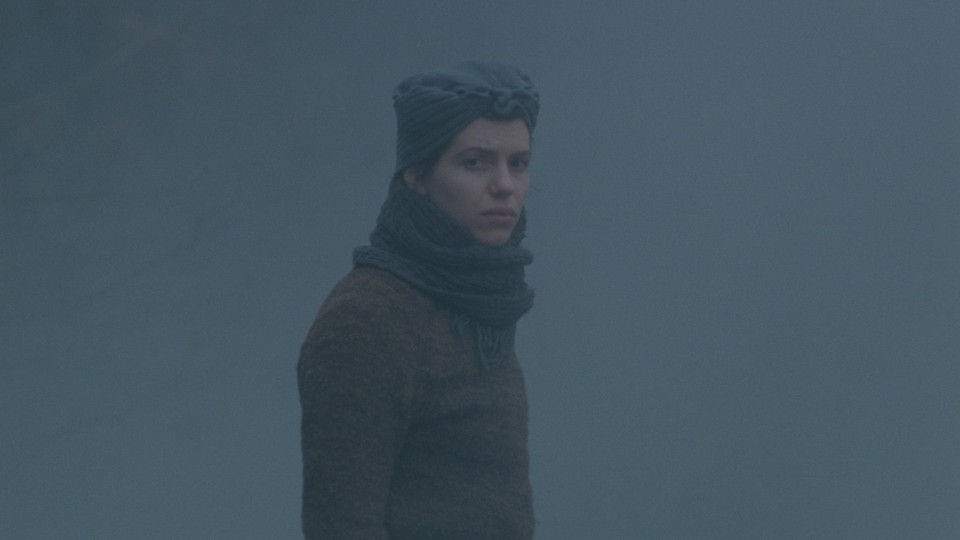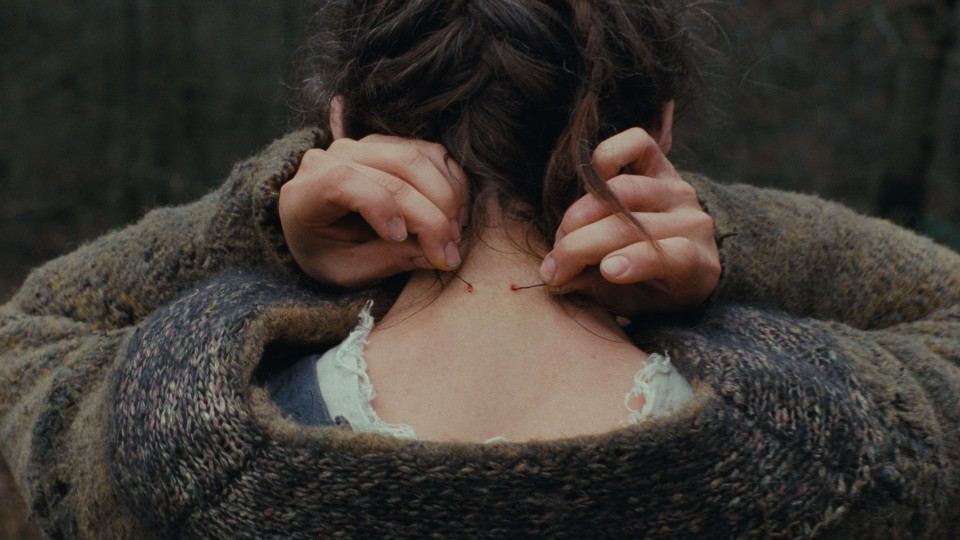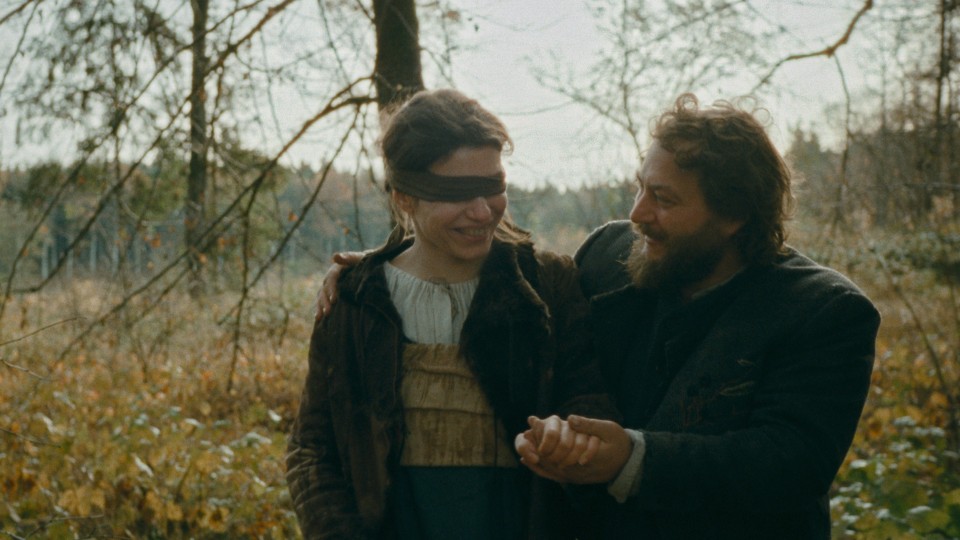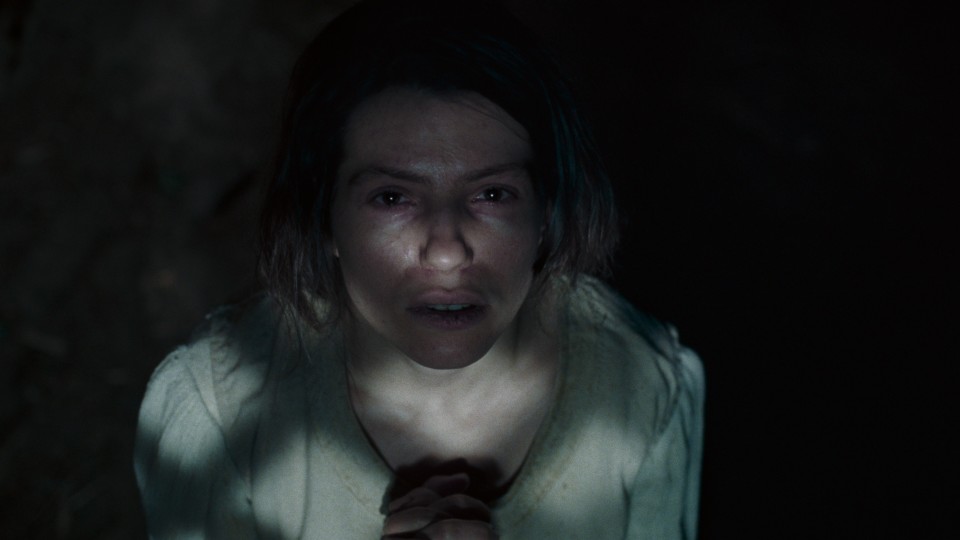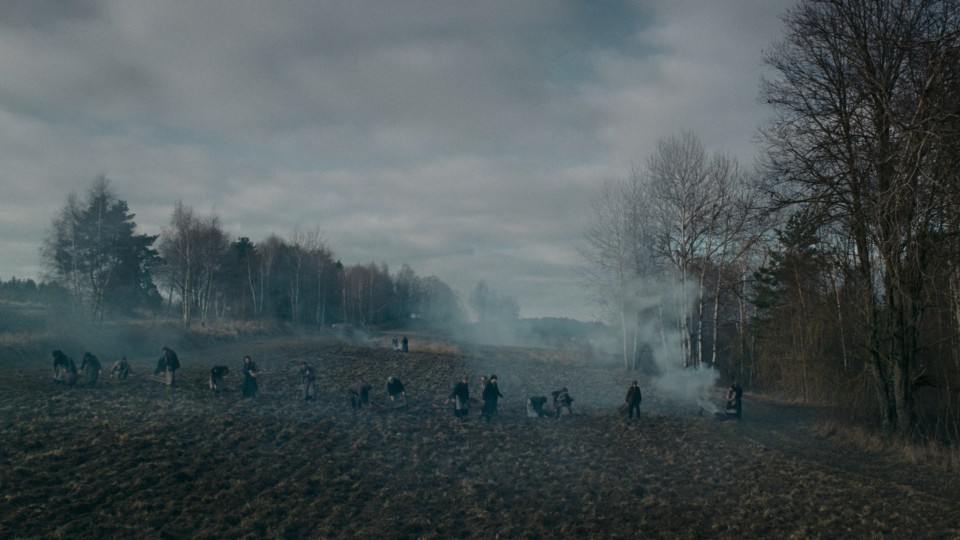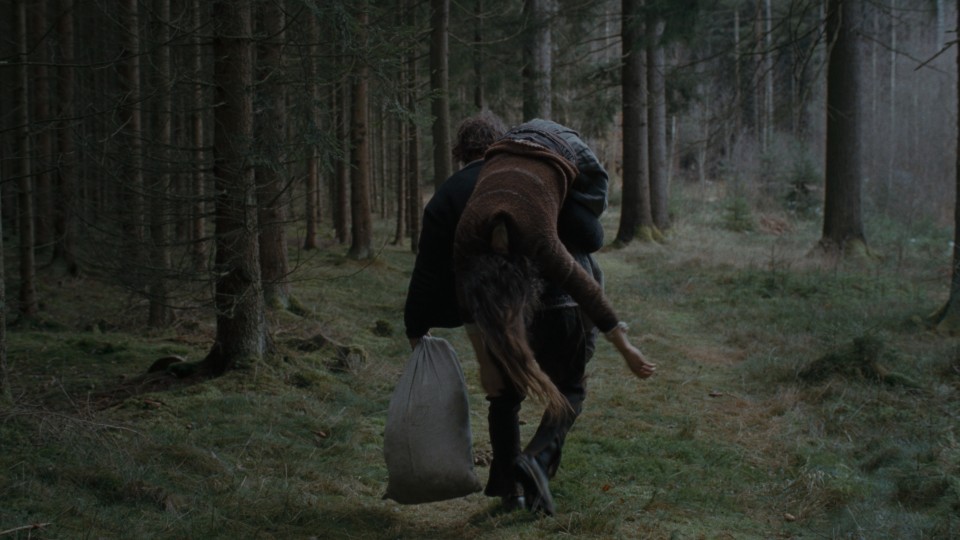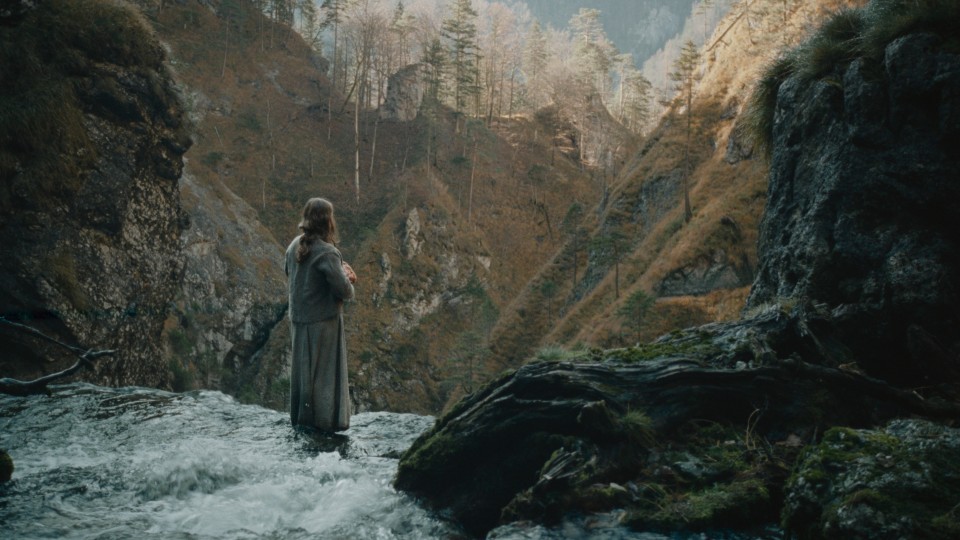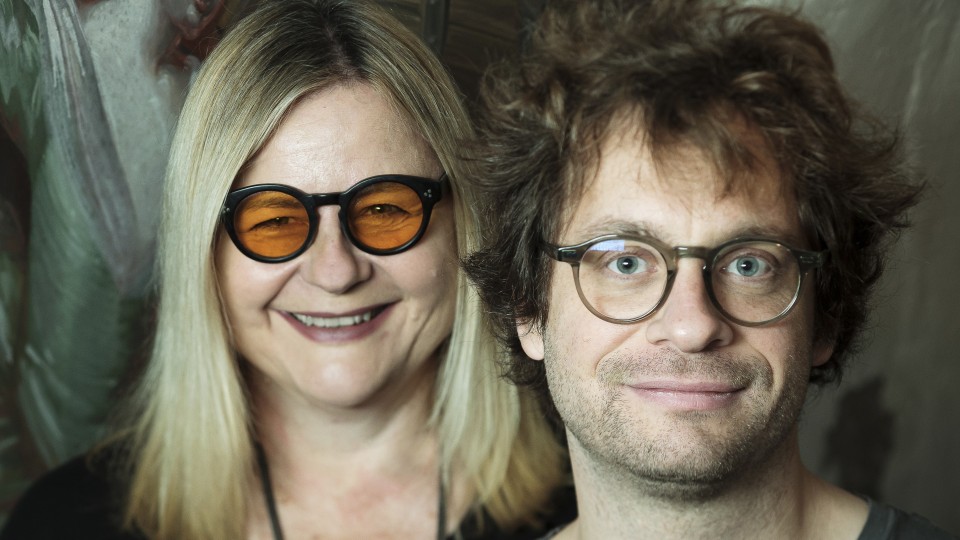Agnes is a young woman. Extremely sensitive and quiet, she feels at one with nature. Not the best prerequisites for someone
from modest circumstances in the 18th century who marries into a peasant family which relies primarily on a young workforce.
Agnes is one of countless women who found an escape from her sense of alienation in a world defined by harshness, austerity
and fear of God. Inspired by historical records of interrogations, Veronika Franz and Severin Fiala employ the power of beauty
and cruelty in THE DEVIL’S BATH to tell a story of confinement and liberation.
In the historical context of your film, which is set around the middle of the 18th century, the title THE DEVIL’S BATH conceals
a very concrete meaning. What is that?
VERONIKA FRANZ: The title refers to an 18th century Austrian vernacular expression: people suffering from melancholy and depression were
said to be "trapped in the devil's bath". At the time, this condition was interpreted spiritually and religiously, and it
was thought that people were depressed because they had opened their hearts to the devil. So our film is about the phenomenon
of depression, among other things. Which is also an issue in our time. After all, in our society – which prioritizes performance
– there are often people who can no longer keep up, who don’t fit in or can’t participate. All causes of depression, then
as now.
The research which provided the thematic source of inspiration for your film places the death penalty in a completely new
light and, above all, focuses on people who have been neglected and invisible in mainstream historical accounts: the large
number of women from very simple backgrounds. What is the point here?
VERONIKA FRANZ: We came across a podcast by Kathy Stuart, a US historian with German roots, and were immediately fascinated by her research
into what’s known as suicide by proxy. It is a chapter in history that has yet to receive much attention. Women – the vast
majority of these people were women – who wanted to die would kill other people, so they’d be executed. It was a form of indirect
suicide. A kind of rebellious act that, in a sense, transformed the dogma of religion or the Church into the opposite.
SEVERIN FIALA: Yes, because at that time suicide was considered the worst of all sins, because it’s the only one where the perpetrator can’t
confess and therefore can’t repent. In contrast, killing someone was punishable by death, but before being executed it was
possible to make a final confession and repent – so that after being absolved by a priest, you could still go to heaven cleansed
of all your sins.
Where did you find the cases that inspired you to tell the story of your protagonist Agnes, which you set in Upper Austria
around 1750?
VERONIKA FRANZ: Actually, Agnes' story is a mixture of an Austrian and a German case. The phenomenon of suicide by proxy was also found in
France, England, Scandinavia, Germany and Austria: that is to say, in Catholic and Protestant countries. We contacted Kathy
Stuart, who teaches in San Francisco; she studied countless court and monastery archives, making this her life’s work, but
once we convinced her that our intentions were genuine, she allowed us to study the 300 to 400 cases she had collected. So
we had the Inquisition protocols at our disposal, as they were transcribed at the time. We were particularly moved by the
case of one woman from Upper Austria; she was interrogated three times by the Inquisitor, who really wanted to understand
why she had done it. We were touched by the fact that such a simple woman from the 18th century seemed to speak to us directly,
and in a language and dialect that is transcribed quite literally. We found very strong echoes of the present day, when she
talks about her dreams, longings, fears and insecurities.
SEVERIN FIALA: It's a kind of description of her life from a woman you would never hear under normal circumstances. She’d never have been
asked about her feelings if she hadn't just killed someone. Sensitivity didn’t feature much in those days. You had to work
and fulfill your function, especially in the world of peasants. There was so much wonderful, accurate material that we stayed
very close to that interrogation transcript for the first versions of the script – and we wrote lots of them. Transposing
the character's life and inner world into cinematic images took a long time.
There are probably few sources of information about 18th century rural life in the Mühlviertel area of Upper Austria, making
it one of the unseen elements of history. What basis did you use to develop the imagery in The Devil's Bath?
VERONIKA FRANZ: Conventional historical accounts are grotesquely unfair, because they only present people considered "special": the nobility
and the wealthy, inventors, artists and warlords. But not the vast majority of the population. We involved three historians
all together in our research, and they encouraged us to concentrate on the material we knew well. We stuck to a lot of things,
and we also allowed ourselves some freedom. It turns out that peasant work today (except perhaps for mountain farmers) has
no connection with the way it was in the past. Thanks to our production designer, we were able to focus on carp fishing, which
has actually been done in the same way since the 12th century, even if today you have plastic buckets and rubber boots when
you’re standing in the water.
SEVERIN FIALA: We were looking for things that we didn't have to stage. The aim of the whole film was that it shouldn’t be historicized,
in the sense of recreating a painting that is itself an idealized representation of reality. We tried to take as many things
as possible from the present day, as factually as possible, so it isn’t so easy to distance yourself from what you see.
Filming took place at a time of year when it was bitterly cold, though without snow – and it makes you feel cold just watching
it all: fishing in the cold water, washing clothes in the stream, life in unheated stone houses. It seems to say a lot about
the emotional coldness that dominates people's lives. Was that a crucial factor in your production?
VERONIKA FRANZ: We’re very pleased about that observation. We filmed in the Waldviertel, in the north-west of Upper Austria, and Severin
studied the weather records of the last twenty years, which promised us that it would be very cold. But the winter for our
film was warm and sunny. There was no snow or fog, which we would have liked, but we still tried to make the coldness come
across visually.
SEVERIN FIALA: Our plan was for the film to start with the wedding in late summer and gradually become a journey into a colder, more monochrome
world. Because that corresponds to what the character is experiencing: losing joy and finding her world cold and colorless.
VERONIKA FRANZ: That’s why darkness was also very important. We went back to shooting in 35mm. The aim was not to use artificial light at
all (with a few unavoidable exceptions at night). That was hugely difficult for the DOP, Martin Gschlacht. He had faith in
the material and really went out on a limb. We’re very grateful to him for going along with our desire for maximum darkness,
and for being willing to push the boundaries of what’s possible with film.
You mentioned that you didn't want to be inspired by historical paintings, which represent an idealized reality. The film
creates a world that’s extremely inhospitable but also incredibly beautiful. Was this also a way to provide space for the
spiritual dimension of the main character and the story?
VERONIKA FRANZ: Exactly. Nature has an immutable quality, and for many people it’s also something divine. People find themselves in it, their
souls, and if they are believers, they can also be with God.
SEVERIN FIALA: It makes the story a little sadder and more tragic when the world is so beautiful, but apart from the main character, who
is slightly removed from reality, nobody else can appreciate that beauty. The only person who’s capable of doing so is ignored.
VERONIKA FRANZ: Beauty is very often on the outside, and hell is on the inside.
How did you reach the decision to deal with the subject of infanticide the way you do in the film?
VERONIKA FRANZ: We take the view that you have to challenge people. We don't show violence gratuitously, but when violence plays a role in
a story, I think it's wrong to look the other way. It must also hurt the viewer when violence occurs. Of course, some things
are horrible to look at. But they’re also terrible in reality.
SEVERIN FIALA: The two murders that occur are historically documented, and we tried to stick to the court records. Cinema, the way we personally
want to experience it, engages you physically and goes deeper. As a member of the audience, you must be prepared to expose
yourself to this violence. That’s cinema as we personally like it. Shaking people and shaking them up.
You were initially interested in the leading actress Anja Plaschg, who also composed the film music, by virtue of her main
profession as a musician. How did your collaboration evolve?
VERONIKA FRANZ: I've always liked the music of Anja Plaschg aka Soap&Skin; I saw several interviews with her, and I was fascinated. I had
the feeling that she would somehow be a good fit for us and our work. When we started thinking about the film music and had
the idea that it should also span an arc to the present day, we contacted her and sent her the script. After reading it, she
sent us an email that appealed to us very, very much.
SEVERIN FIALA: She's a great performer. She wants to do everything for real and feel it during the shoot. Stand in cold water, walk through
thorn bushes. That suited us just fine, because we also like things to be as real as possible. Anja is also incredibly close
to nature. You can see that from the butterfly sections in the film. The fact that butterflies approach her in the Waldviertel
in October and November; that’s something she brought with her. In the shots with the butterflies, there’s no cinematic trickery;
everything is real.
VERONIKA FRANZ: Anja brings a kind of magic to the table. We knew she had a lot of charisma, but we didn't know whether she could play all
the scenes we had written. As directors, we try to be open to what everyone is capable of. The three of us then embarked on
this joint work. There were very nice moments, but also some grueling work for Anja: she had to go through scenes that were
sad and very challenging.
In what ways did this film, as a continuation of Goodnight Mummy and The Lodge, take you into a different sphere of cinematic storytelling?
VERONIKA FRANZ: We didn't want to make a costume drama, a horror film or a documentary. What we show about the hardships of peasant work
conveys physically what we wanted to say about coldness, exertion and being a stranger in the world. And to be honest, I was
also interested in dealing with the fact that women were – and still are – capable of committing horrific physical acts of
violence.
SEVERIN FIALA: Veronika and I have a favorite film. For us, The Ballad of Narayama by Shohei Imamura constitutes a narrative ideal. The film presents a world with all its stillness, visuality and violence,
without ever using violence or effects for the sake of it. Unbelievable things happen that feel quite commonplace in that
world, which seems very closed. Watching it never ceases to amaze you.
Interview: Karin Schiefer
February 2024
Translation: Charles Osborne

